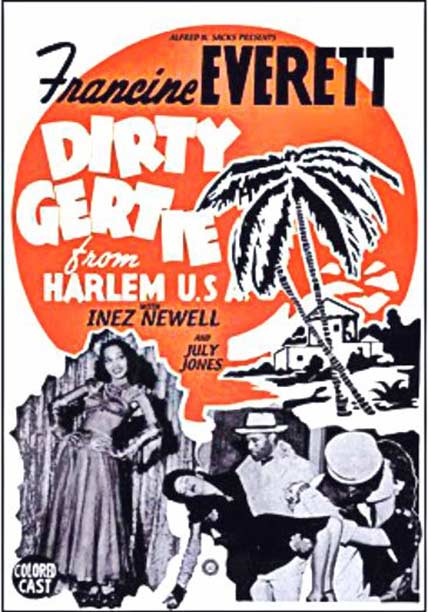AFS Screening Preview: Lars Nilsen on 'The Sepia Screen'
 Southern Methodist University (SMU) in Dallas owns an archive of 1930s and 1940s-era films -- shorts, newsreels and features -- made specifically for black audiences of the time. These historic reels were found in a Tyler, Texas warehouse in 1983, and the team at SMU's G. William Jones Video and Collection has restored and digitized the movies.
Southern Methodist University (SMU) in Dallas owns an archive of 1930s and 1940s-era films -- shorts, newsreels and features -- made specifically for black audiences of the time. These historic reels were found in a Tyler, Texas warehouse in 1983, and the team at SMU's G. William Jones Video and Collection has restored and digitized the movies.
You can view the films online, or if you're in Austin, watch a selection that Lars Nilsen, Austin Film Society Programmer, has compiled from the collection. "The Sepia Screen" program will play at the Marchesa on Sunday, July 27 at 2 pm [tickets info].
The 35mm films screening this Sunday include the short Vanities (1946), Dirty Gertie from Harlem U.S.A. (1946) starring Francine Everett, and Souls of Sin (1949).
I talked (via email) to Nilsen about this upcoming program.
Slackerwood: How did you learn about this specific archive at SMU?
Lars Nilsen: I'm a big fan of these films and I was researching them when I ran across the archive and naturally the wheels turned in my head. I contacted them last year and they told me the films were on tour in South America, but I made plans to eventually bring them here to Austin.
What are your thoughts on the cultural relevance of these forgotten works?
Nilsen: First off, they are not "art films" by and large. They are very low-budget commercial films and plot-wise, they are very similar to their mainstream B-movie counterparts. The interest and value of these films comes from the fact that they are made for black audiences. While the humor is typically quite broad, it's instantly more sophisticated because it need not be slanted to fit a white audience's preconceptions. It can be very "inside" subversive humor.
There's a sad side to the films as well. While there was work (though it was sometimes demeaning) for comics and character actors in "white" films, there was no place for black leading men and women there, so a talented performer like the beautiful, radiant Francine Everett (of Dirty Gertie From Harlem USA) could find few roles in a white film. She was no one's idea of a "mammy" and her very beauty and charm meant she was a misfit, since she was clearly off-limits as an object of attraction in the white world.
Do you plan to eventually showcase the entire collection as part of this series?
Nilsen: We will see if audiences respond. I hope so.


This is who we are and where we come from
These films show the postwar / pre civil rights era culture that formed the dream scheme of our race. Seizing the reins of cultural power took generations and great sacrifice. These films and the company of cast and crew that made them are the Jackie Robinson's and John Lewis's of their respective fields. As the article states, just to show blacks as leading men and leading ladies with agency to be protagonists and antagonists and not simply in service, literally and figurative in the stories of others is often striking to experience, even in this day and age.
Costumes are a vision of how we imagine our better selves. The separate but unequal shadow Hollywood leans on the side of transgression to make up for the lack of production value. Dirty Gertie is a virtual (uncredited) remake of M Summerset Maughn's story filmed as RAIN by both Gloria Swanson, one of the biggest stars of the 1920s and as SADIE THOMPSON by Joan Crawford, the baddest gal off the 1930s and 40s. But this version includes cross-dressing fortune tellers, black officers, hotel owners and virtual nation builders as a matter of course in co-opting a story originally written about British colonialists in the south pacific, powerful men who reshaped the globe with pen and sword, all fallen sway to a woman of color who speaks her mind and calls, well, a spade a spade in the grand tradition of honest and tragic protagonists set loose on a corrupt planet. This blatant copyright infringement was only possible because the films were financed out of Dallas and only played in the south for all-black audiences. If you want to see the hopes of a generation reaching for the brass ring decades before reaching the mountaintop, come out to see this film.
Again, audiences are benefitting from Lars Nilsen's love of all things independent in cinema, and the Austin Film Society's dedication to film preservation of the "show it before it disappears" variety. This is living cinema, so long as it entertains and informs us.